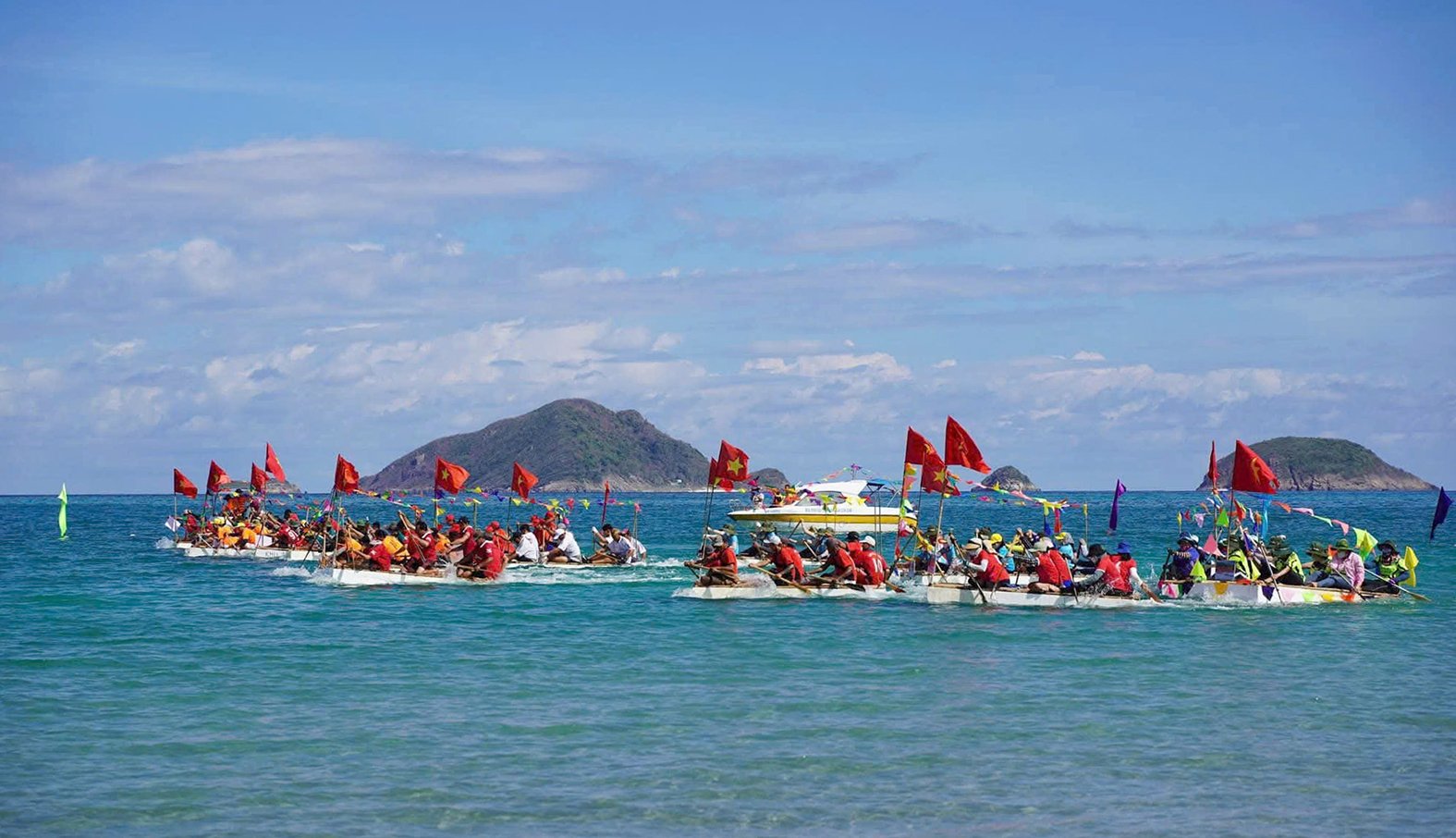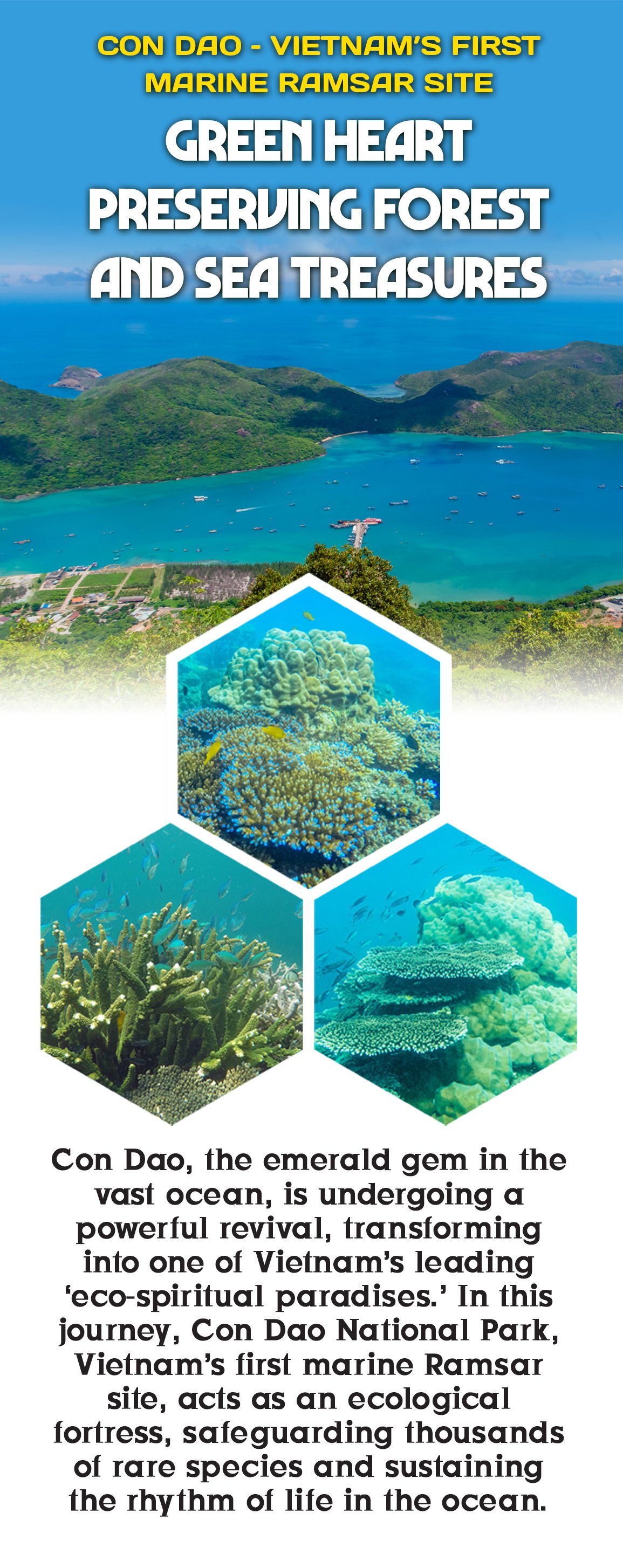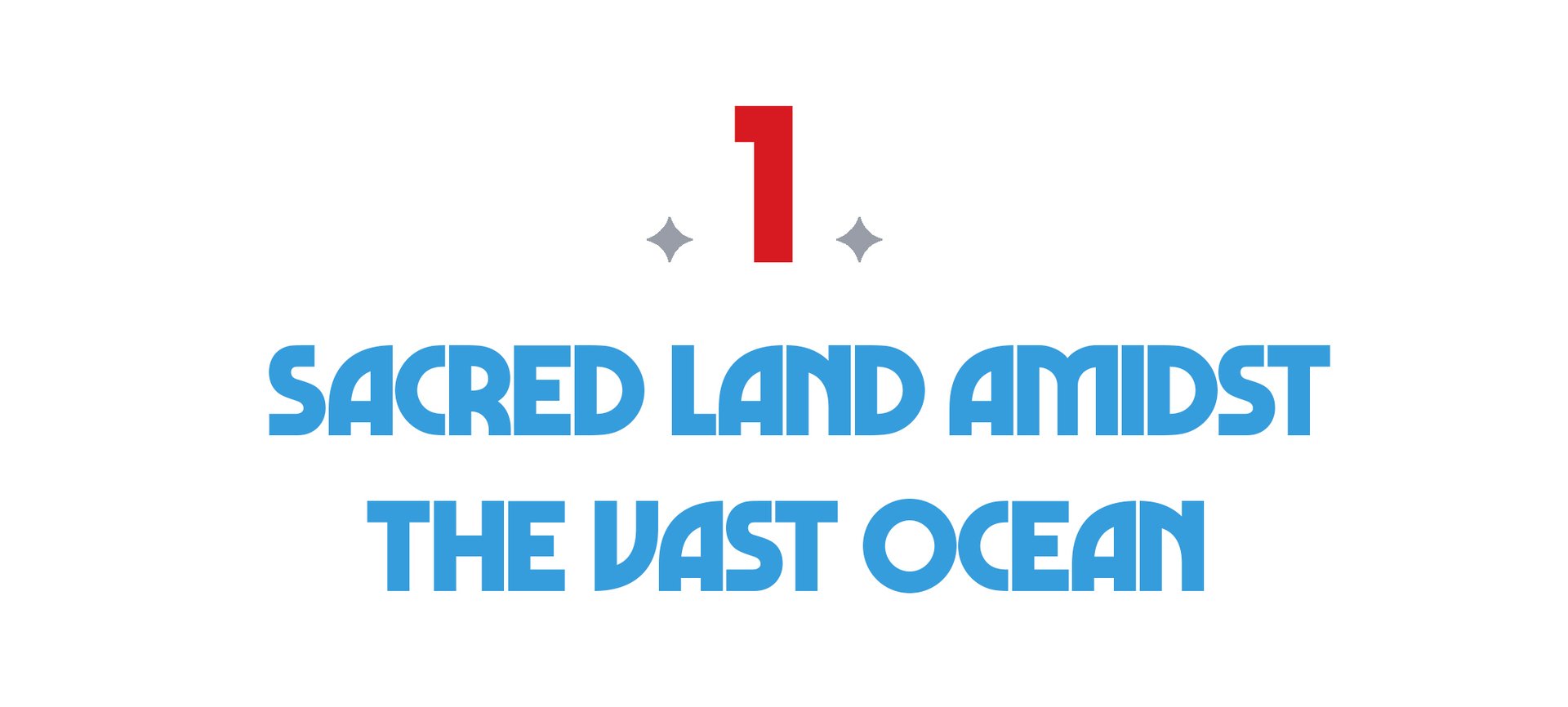
Con Dao is an archipelago of 16 islands under the administration of Ba Ria – Vung Tau province, located 97 nautical miles from Vung Tau city and 45 nautical miles from the estuary of the Hau River. On ancient maps, this land was once known as Con Lon or Con Non in Vietnamese chronicles, while Western documents referred to it as Poulo Condor.
More than a place of geographical and historical significance, Con Dao is a sacred land with rich cultural traditions. The death anniversary of Mrs. Phi Yen, whose real name was Le Thi Ram, a virtuous woman, has been recognized by Vietnam Ministry of Culture, Sports and Tourism as a national intangible cultural heritage. She has become a symbol of the loyalty and integrity of Vietnamese women.
According to Ms. Phan Thi Tim, Deputy Head of the Department of Culture, Science and Information of Con Dao District, if the forests and seas are the body of this place, then traditional festivals are its soul. Every year on October 18 on the lunar calendar, Con Dao residents and tourists gather at Mrs. Phi Yen’s temple to offer incense and pray for peace. “Traditional rituals take place over three days and nights, including ceremonial offerings, palanquin processions, folk performances, and village festivities. The festival is not just a time for the community to honor their ancestors but also a spiritual tourism product of Con Dao,” Ms. Tim said.
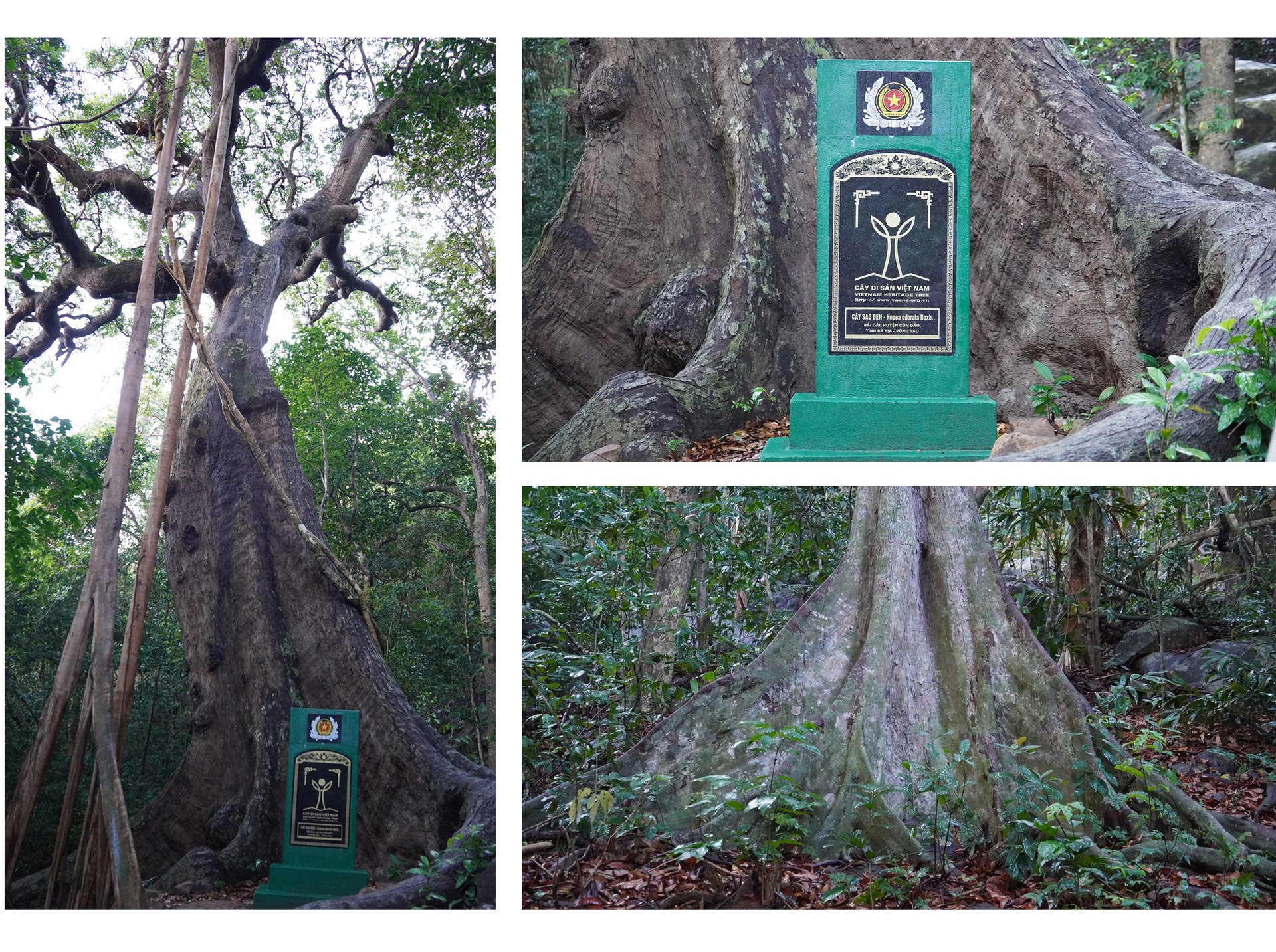
Since 1977, the National Assembly has designated Con Dao as an administrative district of Ba Ria – Vung Tau province. Starting from July 1, 2025, Con Dao will officially become a special administrative zone under Ho Chi Minh City, marking a major turning point that opens up new opportunities for economic and tourism development while preserving its inherent natural and cultural values.
However, before becoming a “sanctuary of peace,” Con Dao was once known as “hell on earth,” where hundreds of thousands of Vietnamese revolutionaries were imprisoned, tortured, and sacrificed. Names like Vo Thi Sau, Le Hong Phong, and Nguyen An Ninh are forever engraved in the nation’s collective memory. Today, Hang Duong Cemetery is not only the resting place of national heroes but also a sacred destination where generations return to reflect, pay tribute, and remember.
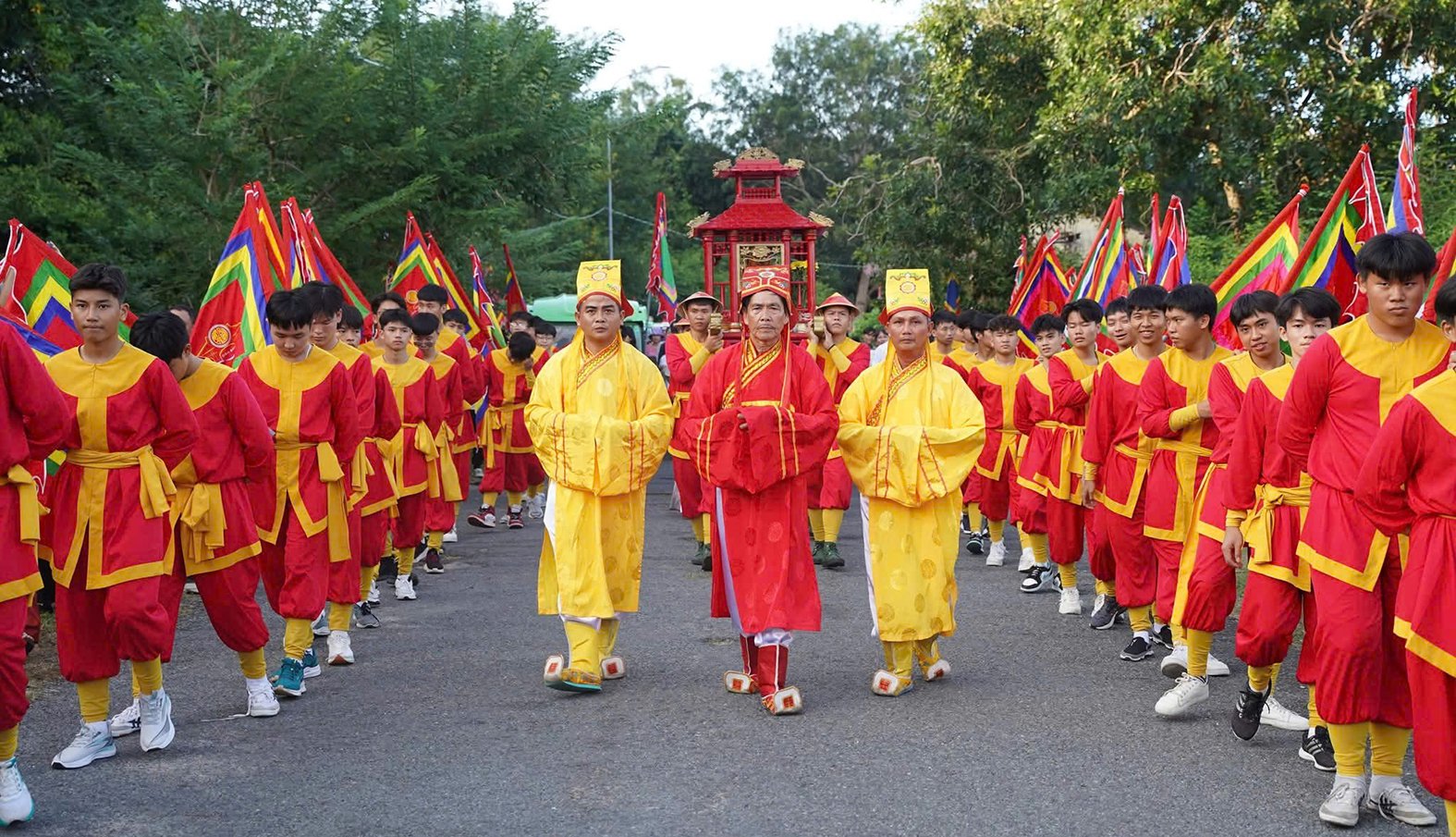
From that painful past, Con Dao has risen for revival. In 1993, Con Dao National Park was established, covering an area of more than 19,800 hectares, comprising 5,800 hectares of forest and 14,000 hectares of sea. It remains one of the world’s rare conservation sites that harmoniously integrates two ecosystems: terrestrial primary forests and the marine biological world.
According to Mr. Le Hong Son, Head of the Department of Conservation and International Cooperation at the Con Dao National Park Management Board, this location is home to over 1,400 species of forest flora and fauna, as well as more than 1,300 marine species. Particularly, Con Dao is the only place in Vietnam where sea turtles still come to the beach to lay eggs every year.
Vast green forests, jade-clear seas, and endless stretches of untouched sand all blend into a stillness that feels deeply sacred. In Con Dao, one is cleansed by nature, awakened by history, and uplifted by the hope of a sustainable future.
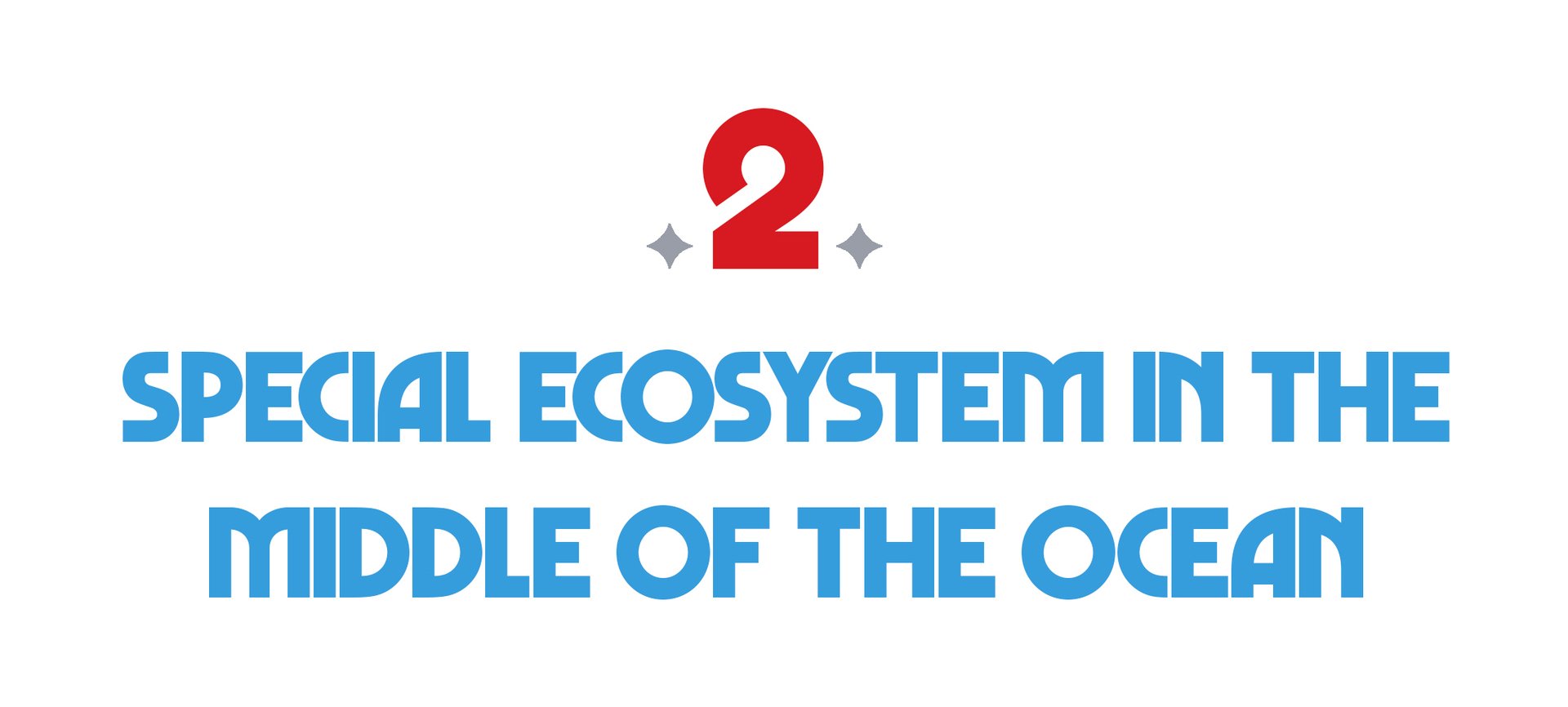
Despite its modest area, Con Dao possesses a rich and nearly intact primary forest ecosystem. According to surveys by the Institute of Tropical Biology, the island is home to over 1,077 species of higher plants, including 44 newly discovered species and 11 species named after this land, such as Con Dao orchid, Con Son jamblon, and Con Dao dipterocarp.
The forest structure here is a combination of evergreen tropical forest, limestone forest, mangrove forest, and coastal dune forest. Many ancient tree species, such as Dipterocarpus, Hopea odorata, and Terminalia catappa, grow densely together, forming a stable ecosystem that helps anchor the soil, acts as a windbreak, and mitigates the impacts of natural disasters.
The forest fauna of Con Dao has so far been recorded as 155 species, including 25 species of mammals, 85 species of birds, 32 species of reptiles, and 13 species of amphibians. The island is also home to several endemic species, such as Con Dao long-tailed macaque, Con Dao black giant squirrel, worm lizard, round-eyed gecko, and blind snake. The bird ecosystem of Con Dao has also identified several unique species, some of which are found nowhere else in Vietnam but this archipelago, such as Nicobar pigeon, white-bellied sea eagle, and pied imperial pigeon.
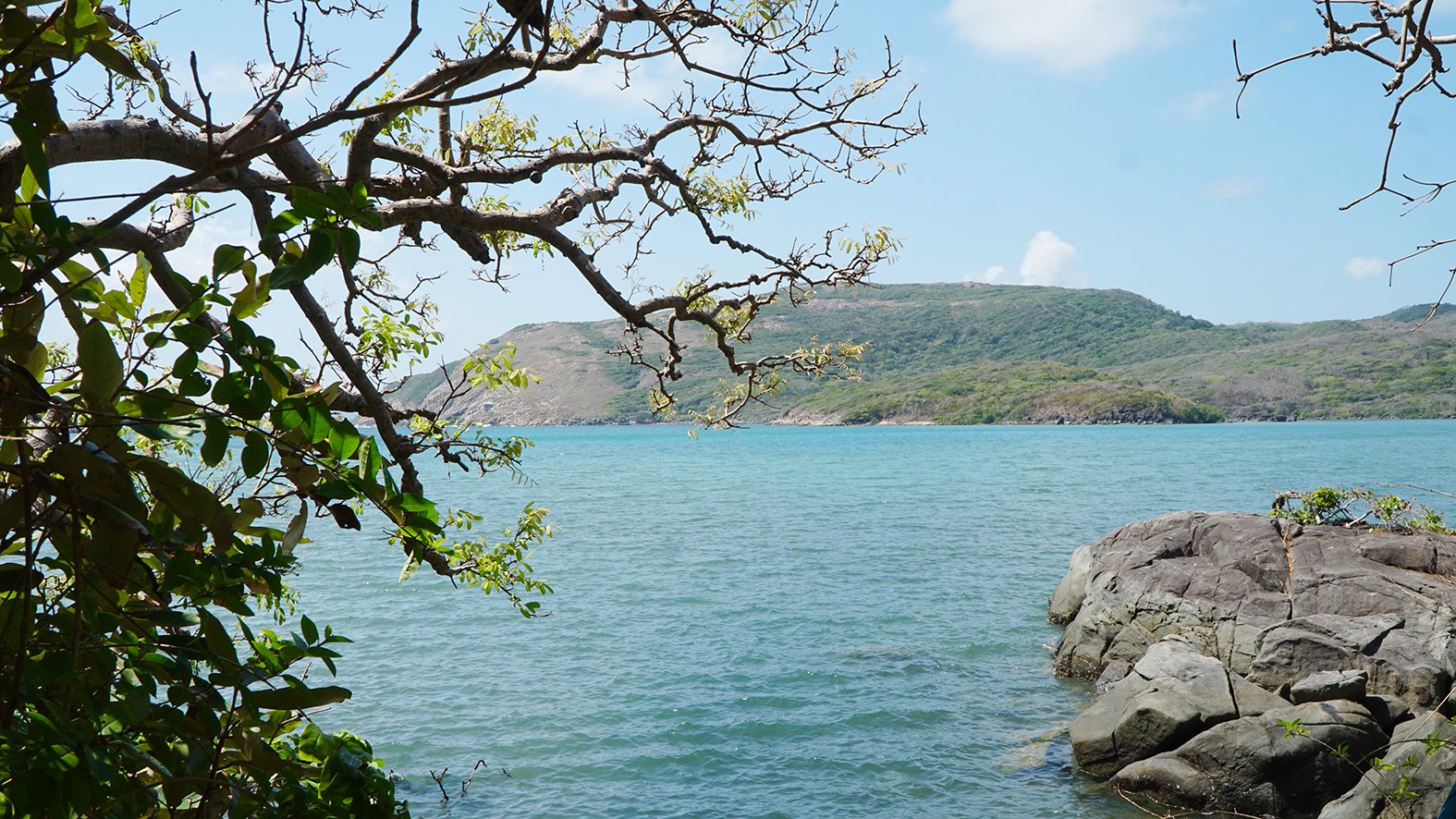
Con Dao sea is among the clearest and cleanest waters in Vietnam. Because of this, the marine ecosystem here is remarkably diverse, with over 1,400 identified species, including more than 340 species of coral, 127 species of seaweed, 7 species of seagrass, and hundreds of fish, crustaceans, and mollusks.
Especially, the coral reefs around Hon Cau, Hon Bay Canh, and Hon Tre are not only sheltering and nesting places for many rare sea fish species but also form Con Dao’s vibrant ecological core. Among the lush seagrass beds is the quiet presence of a creature, which is the Dugong (also known as the sea cow). This rare marine mammal, a surviving member of the order Sirenia and a distant relative of the elephant, once appeared in mermaid legends.
Dugongs live alone or in pairs, feed on seagrass, and have almost no means of self-defense, making them entirely dependent on pristine marine habitats. They reproduce slowly, with only one calf per birth and several years between pregnancies. Dugongs have currently disappeared from many Asian countries.
According to Mr. Nguyen Khac Pho, Director of the Con Dao National Park Management Board, although precise statistics are not yet available, evidence of Dugongs' presence around Hon Cau and Hon Bay Canh has been consistently confirmed for over a decade. “This demonstrates that Con Dao not only offers an ideal habitat with seagrass beds spanning hundreds of hectares but also serves as one of the last safe havens for species on the brink of extinction,” Mr. Pho remarked.
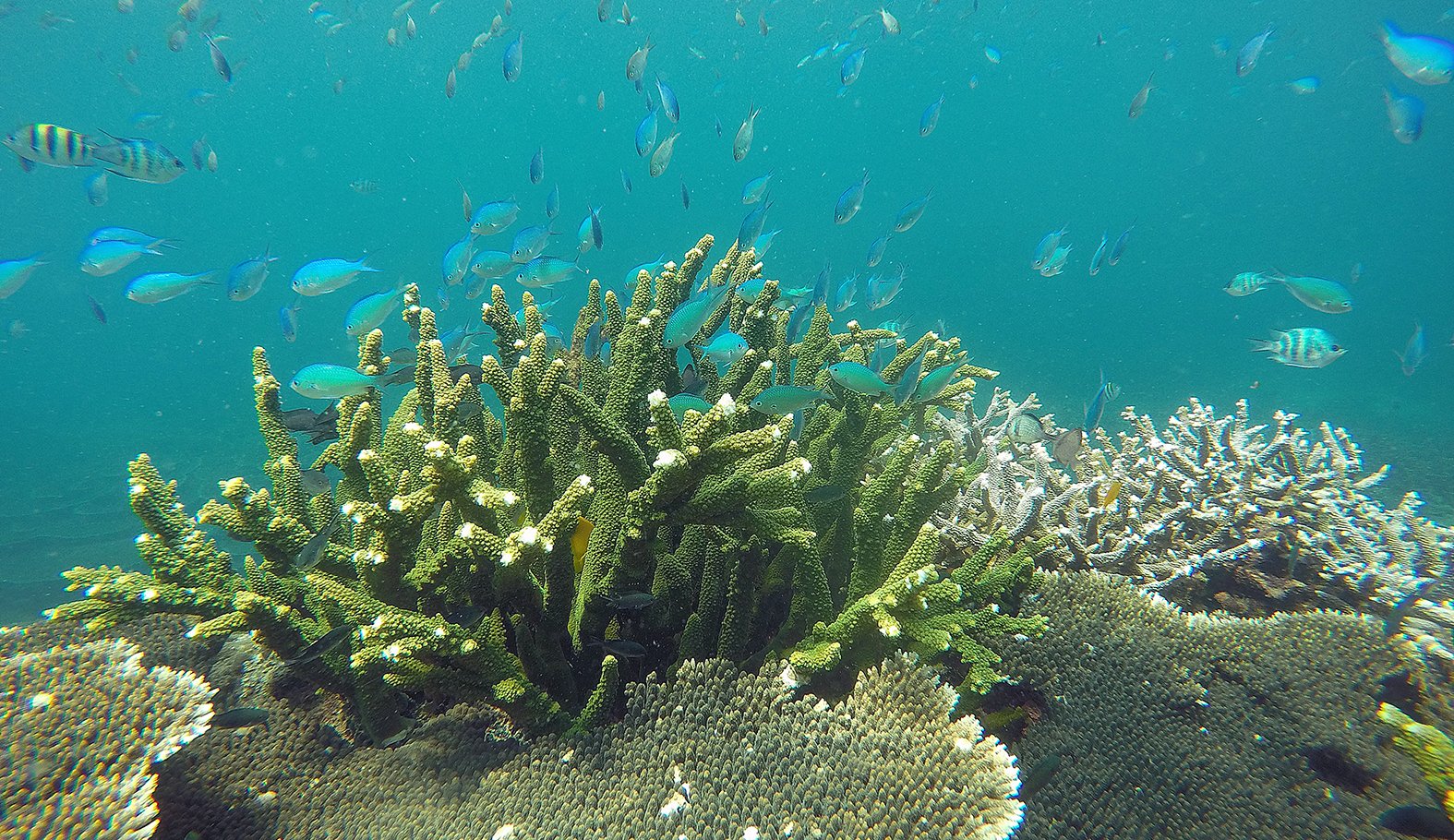
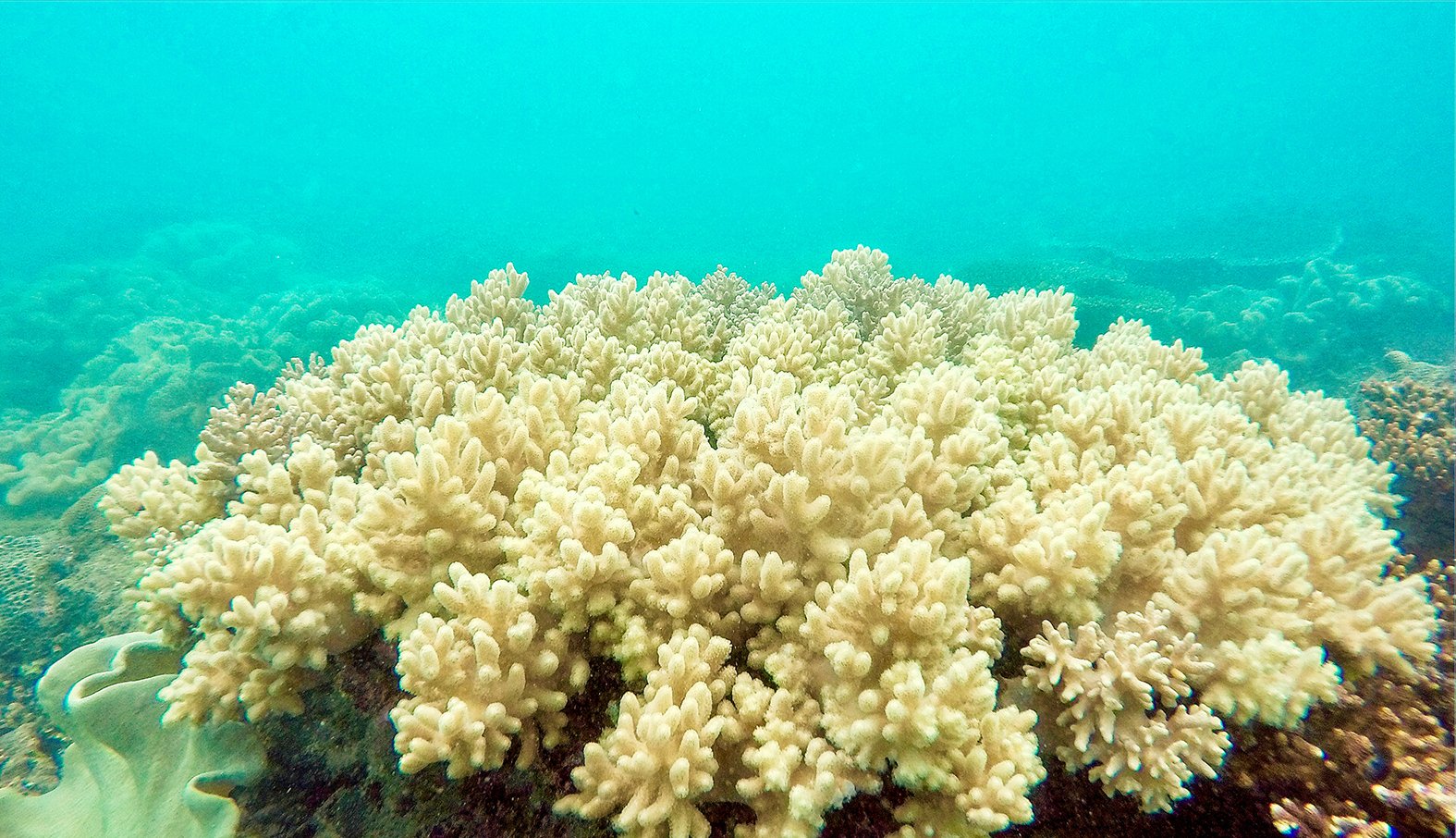
The existence of Dugongs in Con Dao stands as living proof of the exceptional biological value of this sea area. This is also a reminder of shared responsibility, not only among local residents but across the entire community, for preserving the marine ecosystem.
It is no coincidence that Con Dao is called a “paradise for sea turtles.” Each year, from April to November, female turtles from across Southeast Asia migrate thousands of kilometers to lay eggs on the beaches of Hon Bay Canh, Hon Cau, and Hon Tre. Many originate from Malaysia, Indonesia, and even the Philippines.
According to the Con Dao National Park Management Board, since 1993, more than 12,600 nesting visits by female turtles have been recorded. Thanks to strict and scientifically managed conservation programs, by 2023, over 3.2 million turtle eggs had been collected and incubated, resulting in more than 2.4 million baby turtles released back to sea, with an average hatching rate of nearly 90%. This is an internationally impressive figure.
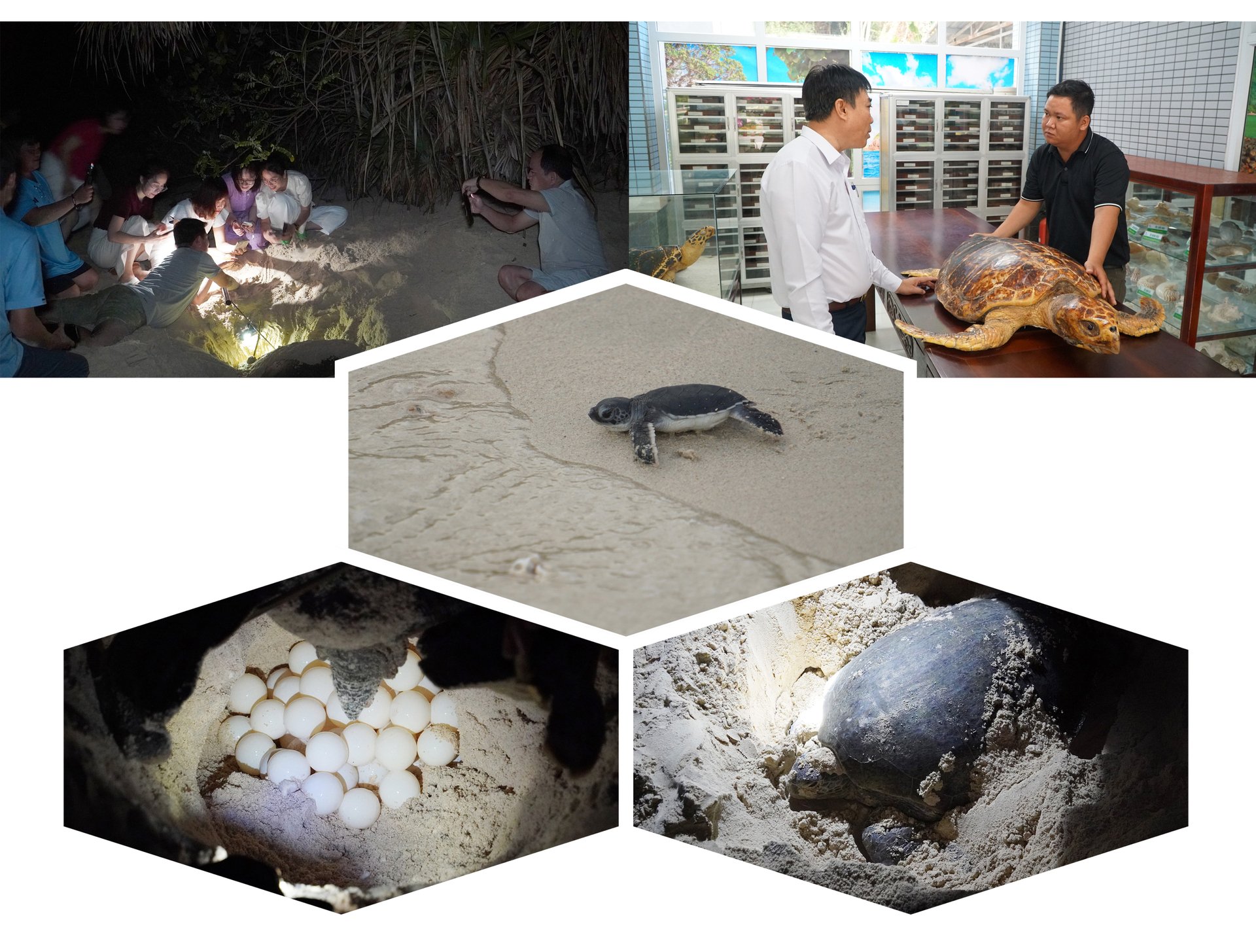
Satellite-tracked turtles have been recorded making journeys of over 2,000 kilometers just to return to Con Dao, the very place where they were born, to lay their eggs. The mechanism of “geomagnetic imprinting” remains a mystery to science, yet it affirms that Con Dao is one of Southeast Asia’s largest sea turtle nesting centers.
Beyond baby turtle releases, the Con Dao National Park collaborates with international organizations to raise sea turtle conservation awareness. Community classes, environmental education programs for students, and eco-tourism models that allow tourists to witness sea turtles nesting are also being implemented, turning the turtle into a living symbol of conservation and sustainable development in Con Dao.
Ms. Marianne Henkel, Chief Representative of WWF Germany’s Asia Program, assessed that assisting in the hatching process and releasing baby turtles back into the ocean carries important significance. “Each baby turtle released into the ocean to start a new journey represents the efforts of organizations, nations, and thousands of volunteers every year.
“This figure not only reflects the effectiveness of a conservation program in Vietnam but also receives high appreciation from numerous international organizations. Protecting each nest of eggs today lays the foundation for biodiversity over the coming decades,” Ms. Marianne Henkel said.
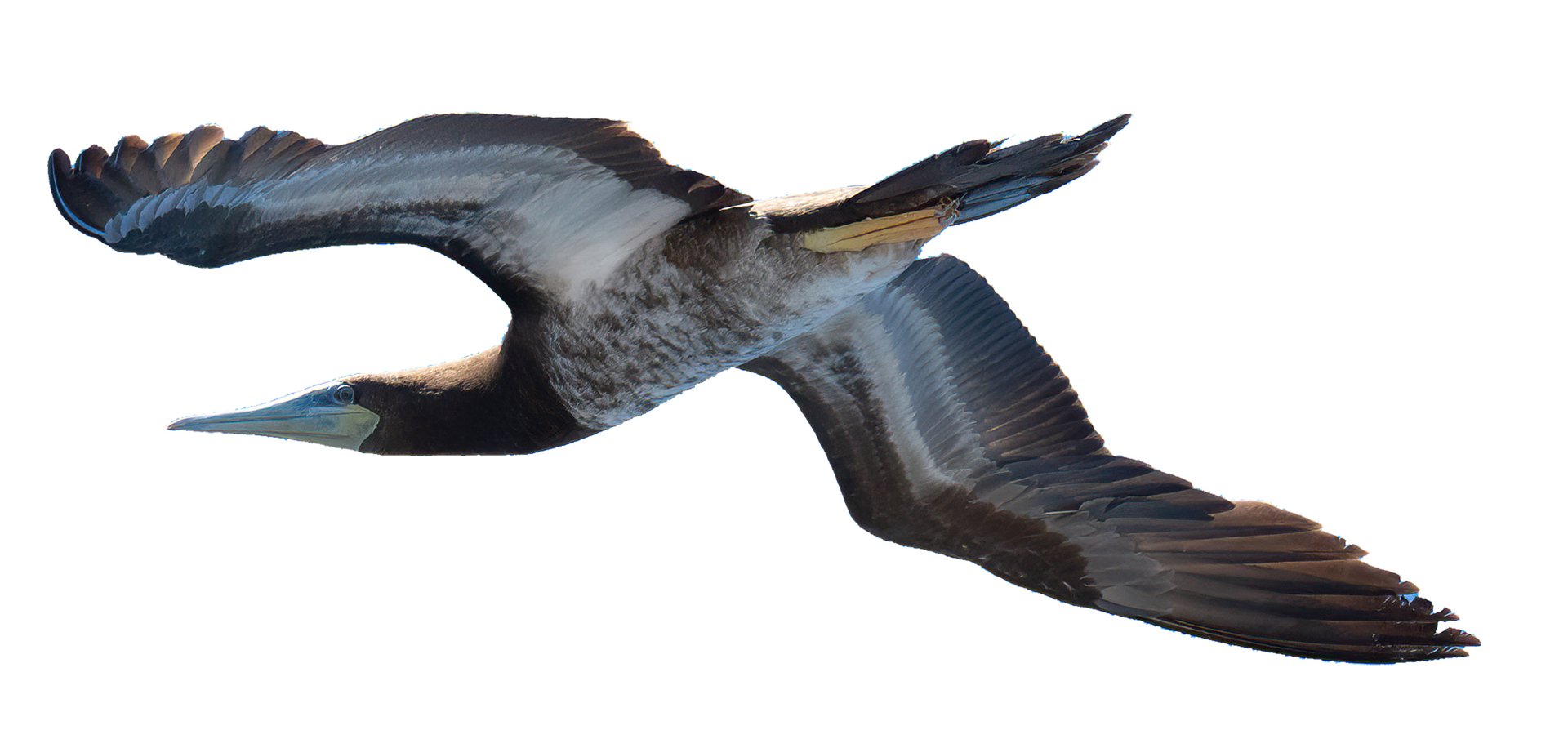
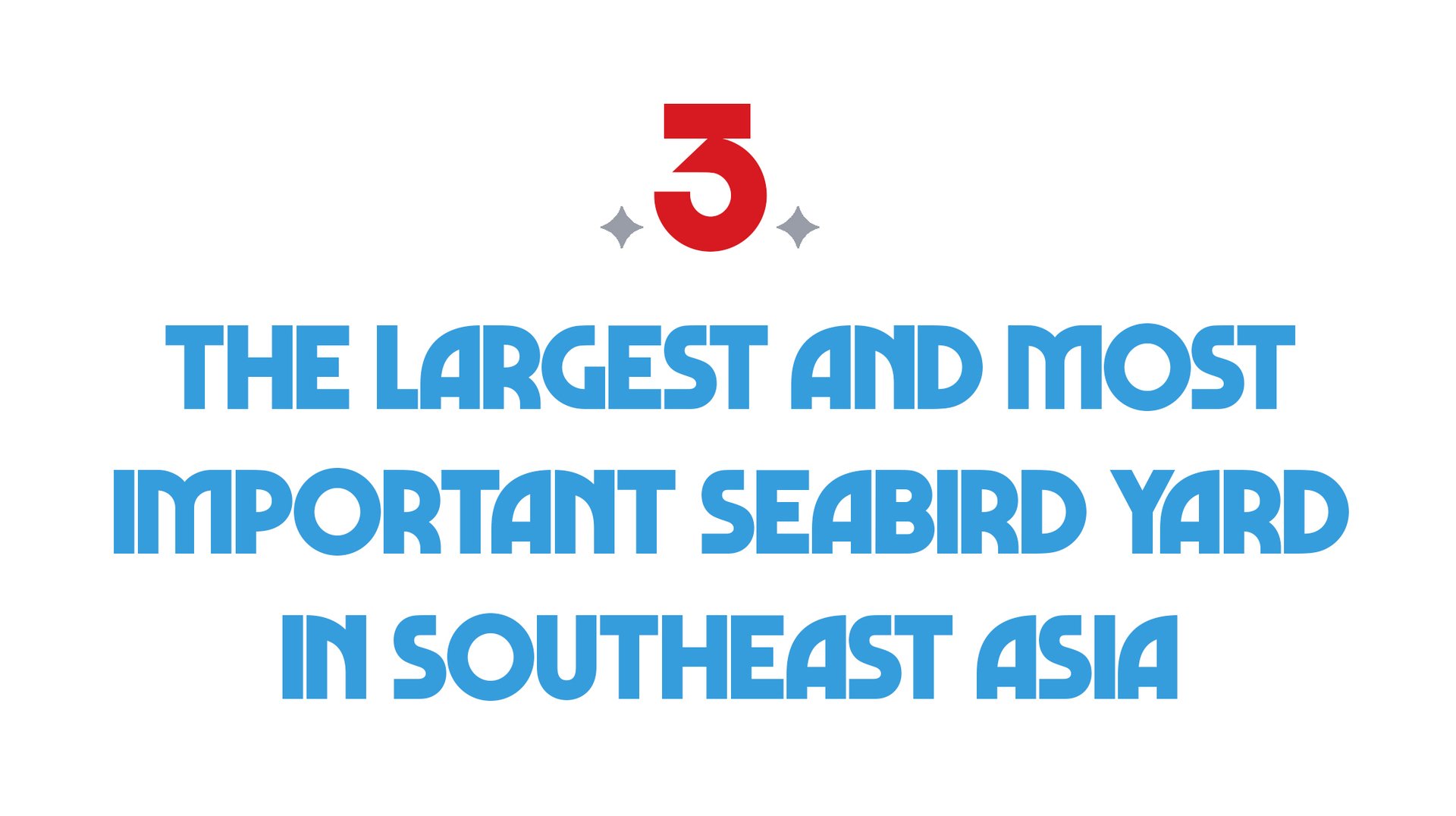
The Con Dao sea area boasts a unique ecosystem, featuring a combination of habitats rarely found elsewhere, including coral reefs, seagrass beds, and mangrove forests. This is an ideal environment for breeding, nursery, and conservation of marine species, while also providing rich food resources for seabirds that migrate to Con Dao each year.
There are at least three islands where seabirds often gather in large numbers, including Hon Trung, Hon Bong Lan, and Hon Tre Nho. The Con Dao National Park has recorded eight seabird species from four families (seagull, tern, booby, and swift), with a total population of nearly 10,000 individuals. Most recently, five migratory seabird species have been recorded nesting and laying eggs on Hon Trung Island, including bridled tern (Onychoprion anaethetus), greater crested tern (Thalasseus bergii), brown booby (Sula leucogaster), Pacific swift (Apus pacificus), and brown noddy (Anous stolidus).
Every year, as the first rains of the season begin to fall, flocks of migratory seabirds fly to Con Dao to mate and breed, forming a uniquely dense and bustling bird population. This is the story of Hon Trung Island, a “treasure” in the middle of the ocean.
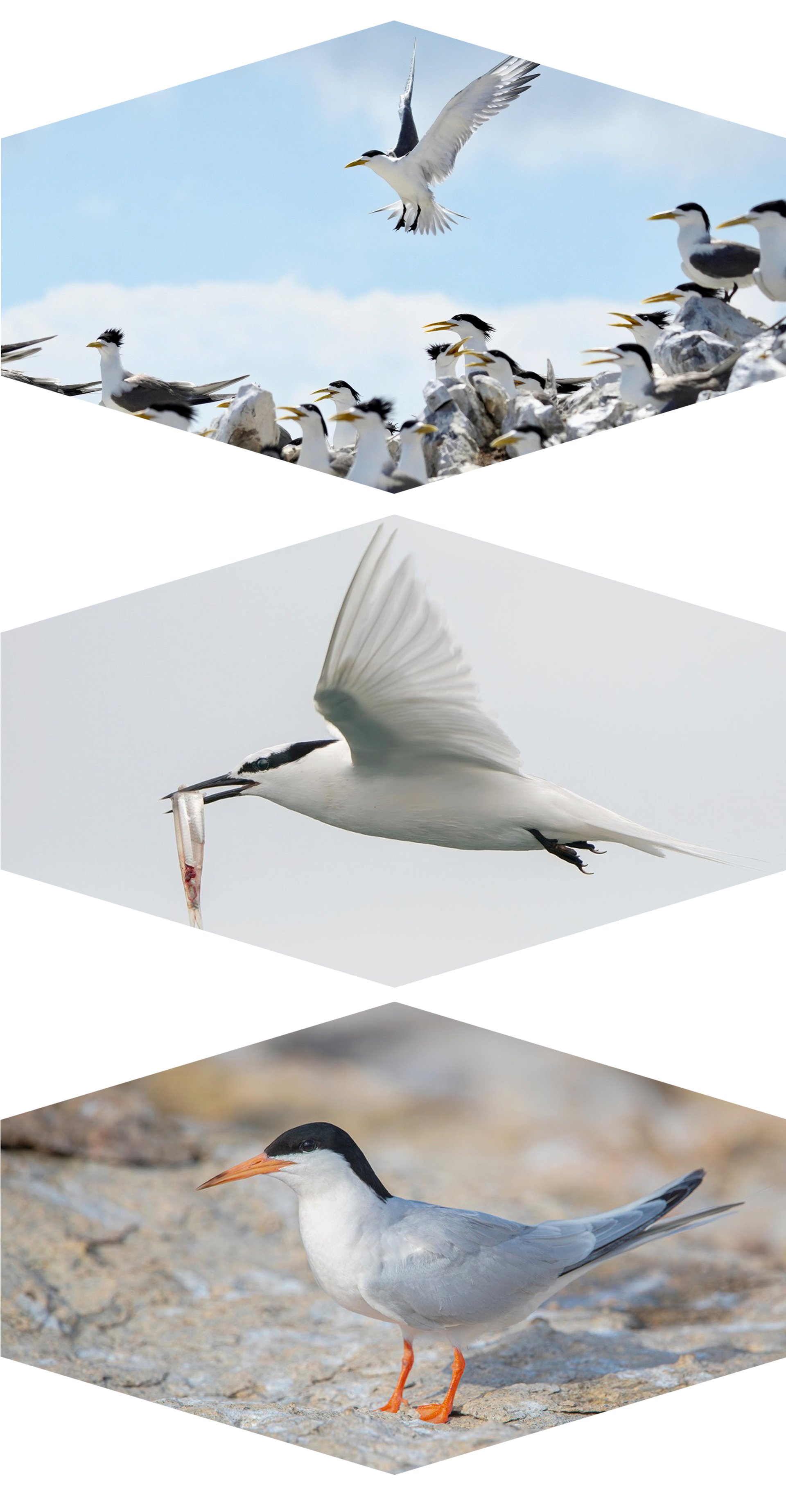
Hon Trung is a small island with an area of less than 2 hectares and a few vegetation scattered across rocky cliffs. The island is named Hon Trung because, from a distance, it resembles a giant egg half-submerged in the sea. This rocky island is blanketed in white guano, echoing with the deafening calls of thousands of individual birds.
Due to its location far from the mainland and in the middle of the vast open sea, Hon Trung, despite being under special protection, was vulnerable to egg theft and bird catching for quite a long time. On numerous occasions, some fishermen climbed onto the island to collect baskets full of bird eggs and even capture chicks to use as food.
The enforcement team of Con Dao National Park once had to deploy speedboats to the area where fishermen were preparing to climb onto the island, using loudspeakers to warn vessels and urge them to keep away from the Hon Trung area.
"Several violators have been strictly penalized, while dissemination campaigns have also been conducted to raise awareness of biodiversity and habitat conservation. Currently, tourists who wish to visit Hon Trung and beautiful, rare bird species on the island must remain aboard boats or canoes, circling the island to enjoy the view and take photos," said the Director of the Con Dao National Park Management Board.
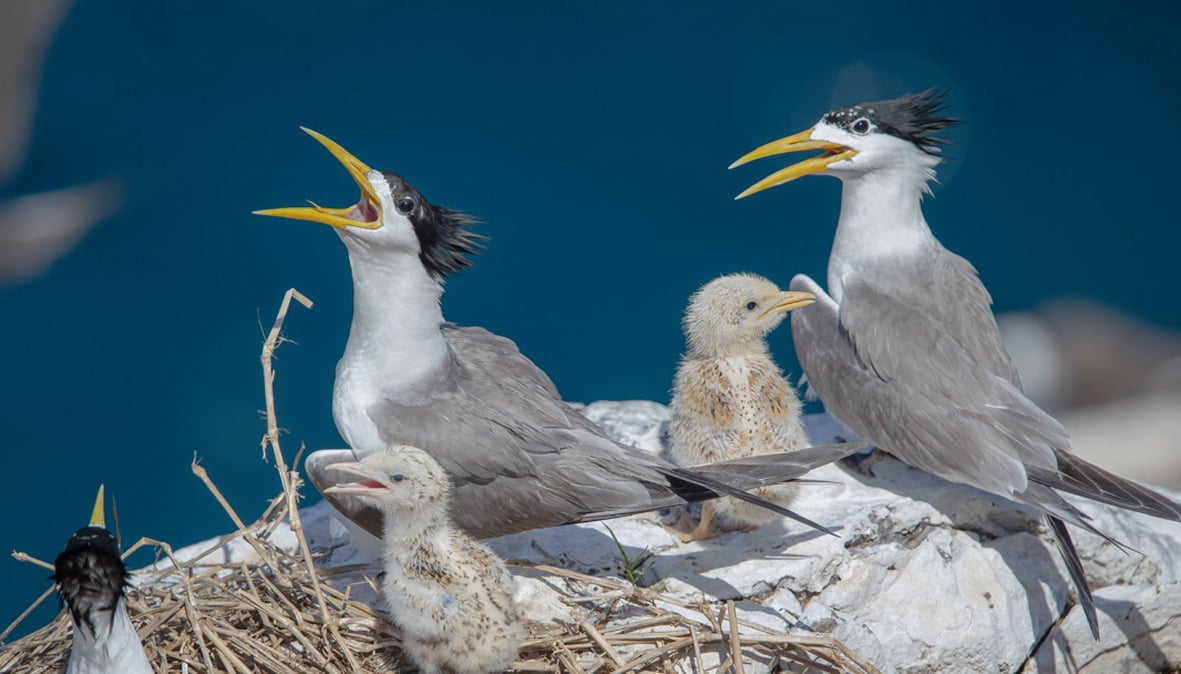

Recently, Con Dao National Park installed security cameras on the peak of Hon Trung, offering a full view of the island. These cameras operate 24/7 and transmit images directly to the smartphones of park managers and staff, allowing them to make informed and effective management decisions in real-time. Due to being far from the mainland, the security cameras are powered by solar panels installed on the rocky island.
The average egg density at Hon Trung bird yard is estimated at 4.88 eggs/m2. Given the island’s recorded area of 1.49 hectares, equivalent to 14,900 m2, a calculation yields approximately 72,712 eggs, which is an impressive figure compared to other bird yards in Vietnam.
"This is just a temporary calculation for illustrative purposes, and it will certainly prompt debate and need further verification. It is also necessary to have broader, more scientific studies on this issue," shared Mr. Nguyen Khac Pho, Director of the Con Dao National Park Management Board.
In late September 2024, the Vietnam Records Organization recognized Hon Trung as the seabird yard with the highest nesting density in the country.
Prof. Dr. Dang Huy Huynh, President of the Zoology Society of Vietnam, assessed, "This is a title of great significance and serves as a foundation for promoting ecotourism and showcasing the beauty of wild birds in Vietnam. It is a peaceful natural heritage that needs to be preserved and developed for today’s generation and for future generations."


Con Dao is also an attractive destination for ecotourism enthusiasts and nature explorers by trekking through dense forests or diving amid coral reefs.
One signature experience is the trekking route from Con Dao National Park to Ong Dung Beach. Tourists will trek around 5 kilometers through primary forests, passing giant ancient trees that take several people to encircle them, and encountering squirrels, monitor lizards, or kingfishers. At the end of the route lies Ong Dung Beach, with crystal-clear waters and smooth, round pebbles. This is an ideal spot for snorkeling right off the shore.
In addition, the route leading to Mount Thanh Gia, the island’s highest peak at 577 meters, is an ideal point for panoramic views of Con Dao. In the early morning or at dusk, wisps of cloud drift past at eye level, creating a magical and unforgettable scene.
Underwater adventure enthusiasts can choose coral diving tours at Hon Cau, Hon Tre Lon, Dam Tre, and Hon Bay Canh. With depths ranging from 2 to 8 meters, the coral reefs here are dense and brilliantly colorful, like a secret garden blooming in the heart of the ocean. Lucky divers might encounter sea turtles or schools of fish shimmering like galaxies.
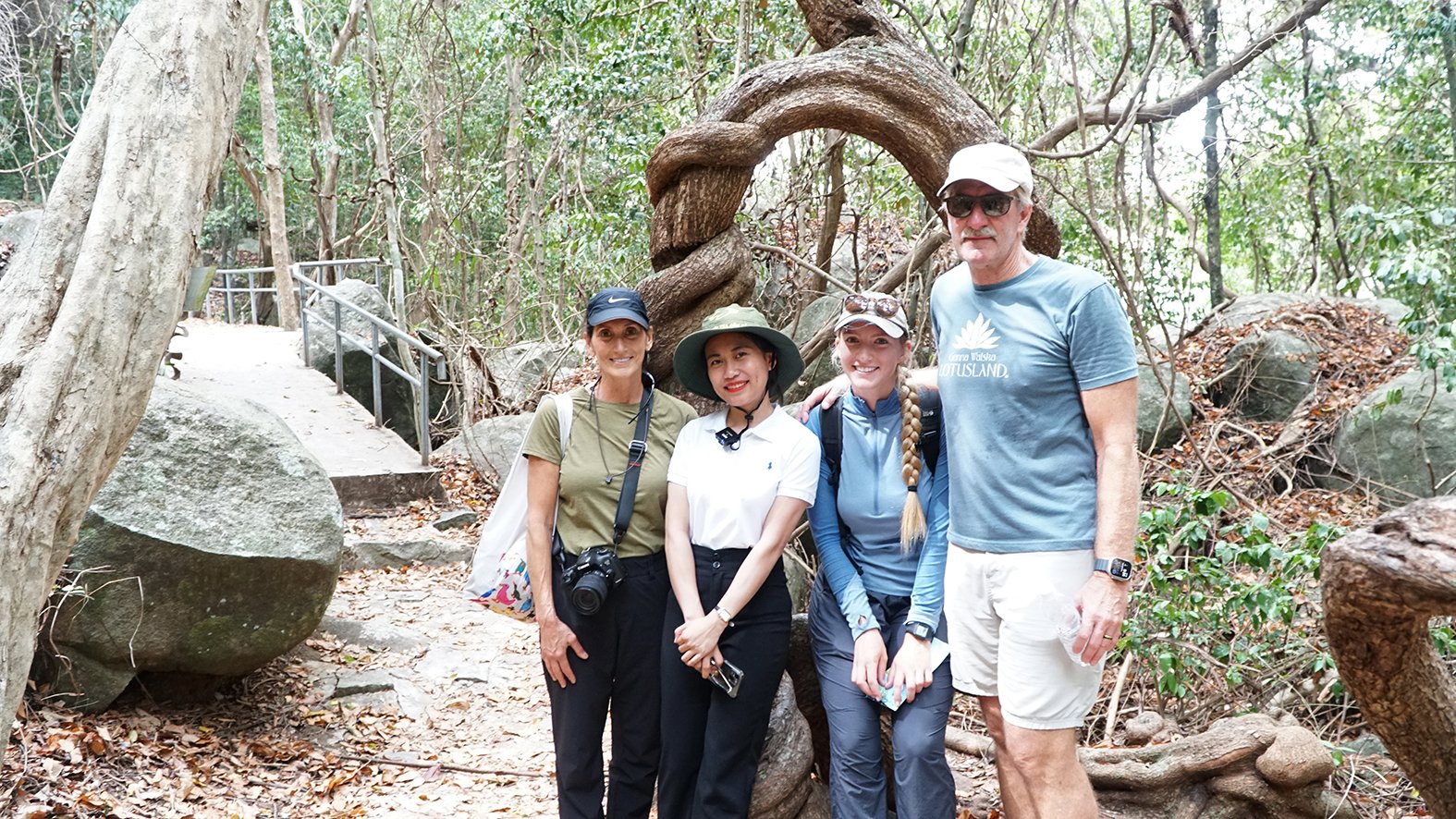
In 2024, Con Dao district welcomed nearly 590,000 tourist arrivals, including approximately 24,000 international tourists. Con Dao National Park welcomed nearly 45,000 eco-tourists, while historical sites across the island attracted close to 216,000 visits. The district’s total tourism revenue was estimated at VND 2,360 billion.
Con Dao National Park is actively promoting ecotourism, with outstanding tours to observe sea turtles nesting and the release of baby turtles back into the ocean. Over the past decade, the turtle conservation program alone has successfully released more than 150,000 baby turtles into the wild.
According to the People’s Committee of Con Dao District, instead of chasing tourist numbers, the locality has chosen to enhance quality while preserving its intact ecosystems and cultural-historical depth, aiming to become a green and memorable destination amidst the ocean.
Con Dao today welcomes back each seedling, each baby turtle, and the peaceful breaths of its tourists. In an unstable era due to climate change, pandemics, and resource depletion, Con Dao stands as a miracle, reminding us that when humanity pauses, listens, and cares for nature, life can flourish once more.
To preserve that miracle, everyone, whether travelers, local residents, managers, or businesses, plays a role in preserving Con Dao for future generations.
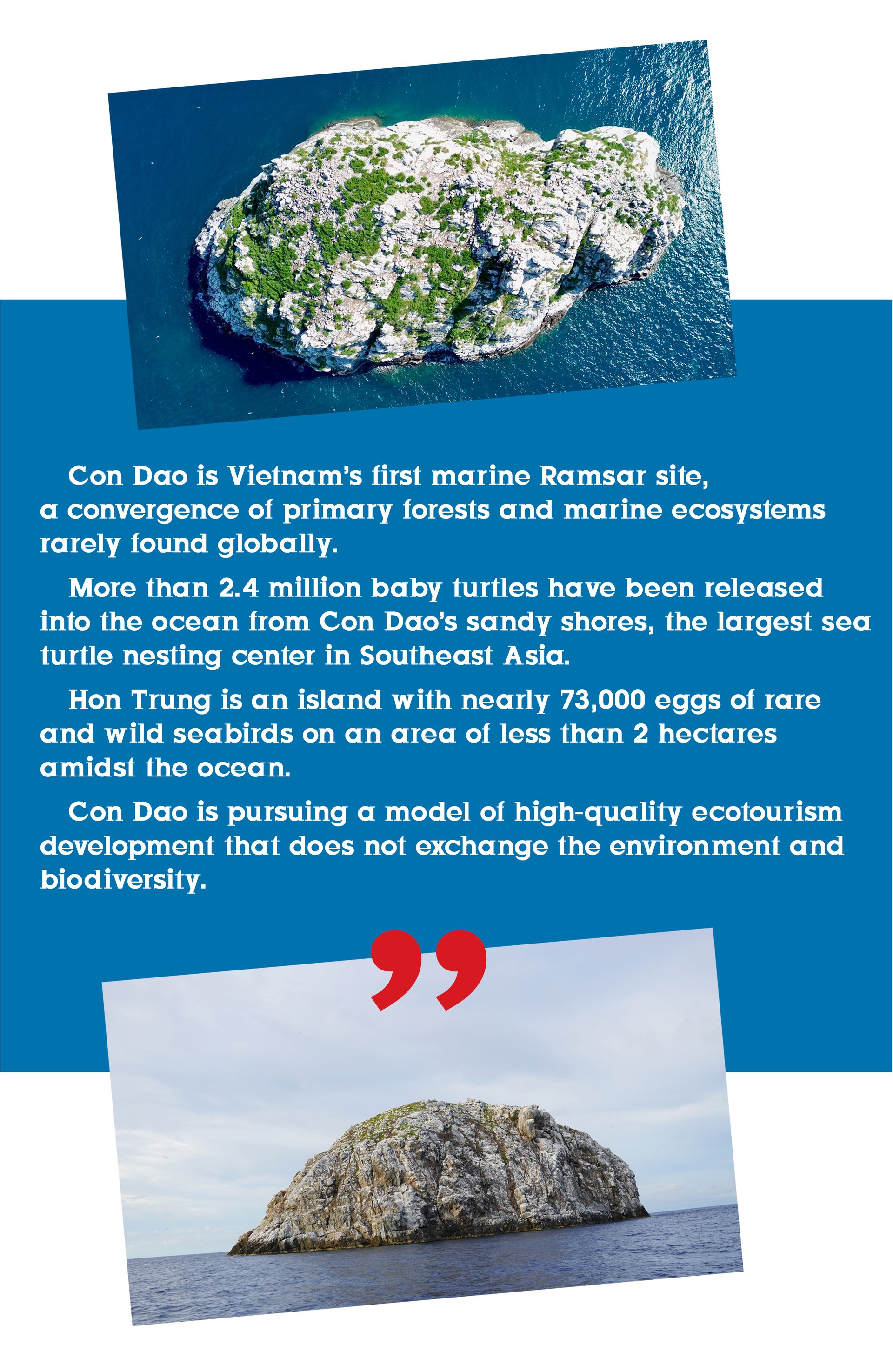

Ecotourism in Con Dao is taking off. Yet every day, the island district struggles to cope with 25–27 tons of domestic waste, nearly 16% of which is plastic. Its only landfill, in use since 1985, has now reached nearly 100,000 tons and is completely overloaded.
From the open sea, monsoon winds and strong ocean currents carry ghost nets, plastic bags, and industrial bottles, burying beaches and mangrove forests that were once the home to endangered species. “This is a persistent challenge,” admitted Mr. Tran Thanh Huyen, Vice Chairman of the People’s Committee of Con Dao District.
According to WWF, every meter of Con Dao’s coastline carries an average of 62 pieces of plastic waste. The total volume is estimated at 13 kilograms per meter, the highest figure among Vietnam’s 11 marine protected areas.
Faced with this reality, in June 2022, the District People’s Committee and WWF’s “Reducing Ocean Plastic Waste in Vietnam' project joined hands to take action. 100% of schools in Con Dao currently operate “Plastic-Free Canteens,” run “Green Clubs,” and hold “Recycling Contests.” Students are learning to sort waste and limit single-use plastics. The Women’s Union has recycled 400 m2 of panel into 400 bags. The Youth Union organizes “Trash-for-Gifts” campaigns. The Fatherland Front has converted dumping grounds into herbal gardens.
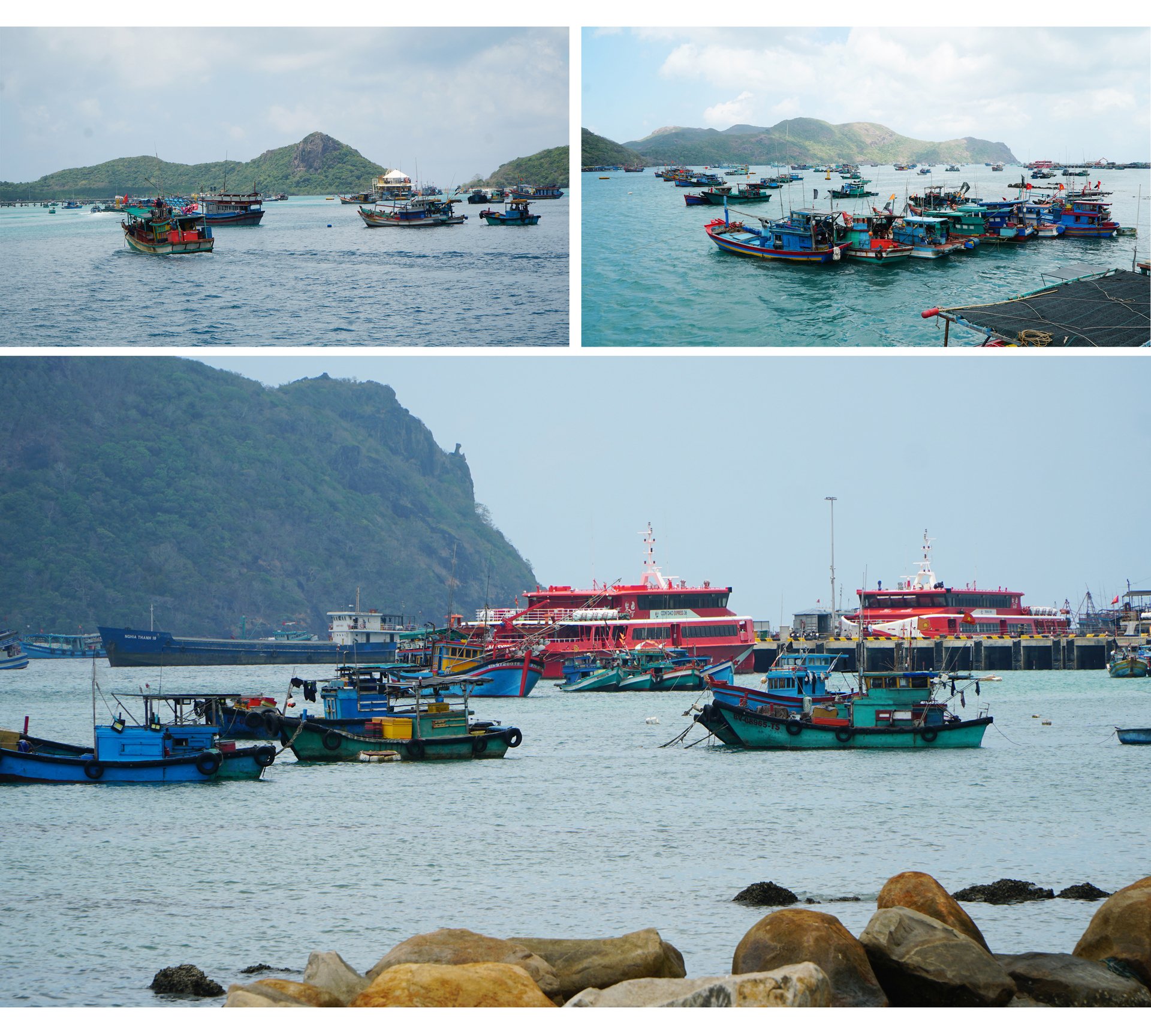
Under the sea, more than 10 tons of waste entangled in coral reefs, most of which are ghost nets, the deadly traps drifting through the ocean, have been retrieved. Nearly 1,000 m³ of ocean waste from beaches and mangrove forests has been collected.
Cleaning up is not just for aesthetics; it allows the sea to breathe and gives coral a chance to thrive. Community communication programs are now held regularly in towns, schools, and accommodations. Leaflets, posters, communication videos on sea turtle conservation and single-use plastic reduction, along with nature photography contests, have generated strong public engagement. People in Con Dao no longer rely solely on tourism; they have become companions of the forest and the sea, marking a notable shift in awareness.
Mr. Tran Thanh Huyen, Vice Chairman of the People’s Committee of Con Dao District, affirmed that the district will pursue a high-quality, well-managed tourism model. A new planning system is expected to minimize concrete construction, encourage the use of eco-friendly and energy-saving materials, and preserve sensitive ecological zones.
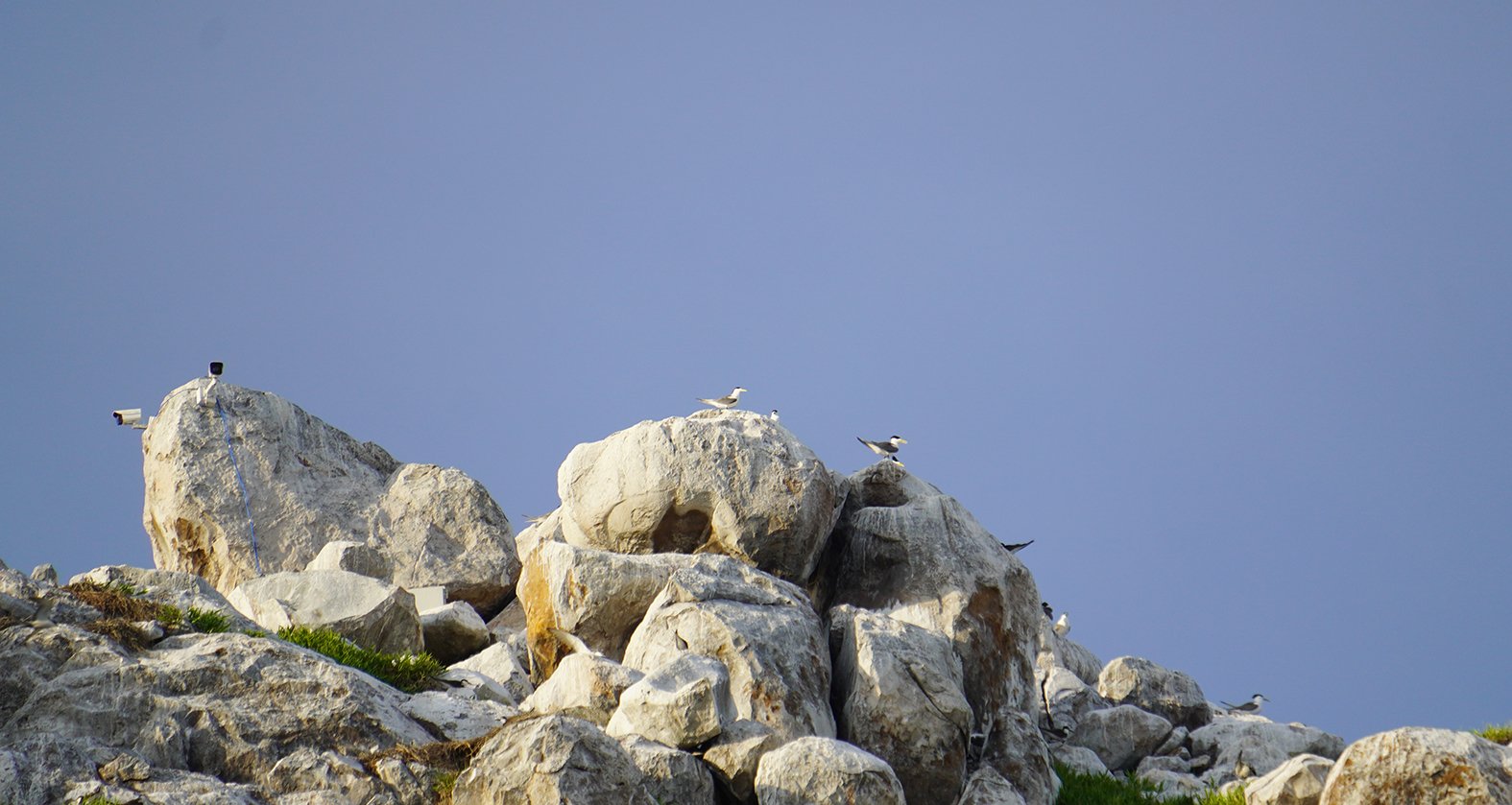
“Marine protected areas will be expanded, and green corridors connecting small islands to large islands will be maintained to ensure the natural migration flow of marine species. At the same time, a new ecological surveillance camera system, a conservation research center, and waste treatment infrastructure are currently under investment proposal,” Mr. Huyen said.
With a series of international recognitions, from Ramsar Site and ASEAN Heritage Park to membership in IOSEA (Indian Ocean–Southeast Asia Marine Turtle Memorandum of Understanding), Con Dao is not only a national treasure of Vietnam but also a 'global biological park' where the world places its trust in sustainable conservation efforts.
In 2013, Con Dao was recognized as Vietnam’s first marine Ramsar site, marking the country’s initial step in integrating its coastal ecosystems into the global conservation network. In 2019, this place joined the IOSEA Marine Turtle Conservation Agreement. And in 2023, it was recognized as an ASEAN Heritage Park, a prestigious title in Southeast Asia.
Vietnam is currently in the process of preparing a nomination dossier to propose Con Dao as a mixed World Heritage Site (natural and cultural). If successful, it would become the country’s second site to receive this title, after the Trang An Landscape Complex in Ninh Binh.
